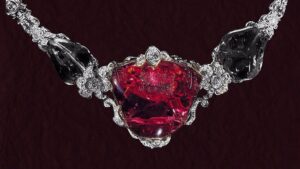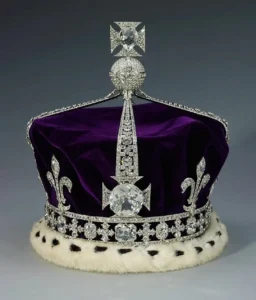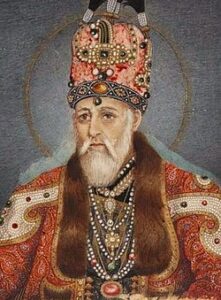Indian royalty has long been renowned for its lavish and intricate gold and gemstone jewellery. For centuries, across various royal families, this tradition has been passed down. Under the patronage of royal families, the artisans’ jewellery-making skills developed, and these trends are reflected in modern-day jewellery designs.
Influence of The Mughal Era on jewellery making designs
With the emergence of the Mughal Era from the 16th to the 18th century, when the Muslim dynasty took over the whole of Northern India, many Mughal emperors and kings married Rajput princesses. This marital relationship had a vast influence on Indian jewellery designs.
The Mughal craftsmen redefined the gold jewellery and carved beautiful pieces of art that have become collectables in modern-day society.
Navarantna, or the nine gems embellished on gold, became a popular trend during this era, which remains one of the most popular and extravagant forms of Indian jewellery to date. The practice of making necklaces and bracelets with cut stones was a typical jewellery specimen of that period.
Advent of Meenakari jewellery style
While enamelled jewellery has been taking the Indian jewellery market by storm, this famous style evolved in the Mughal Era. The technique, popularly known as “Meenakari”, is believed to have been first introduced by Emperor Shah Jahan in the 16th century. It is the handcrafted neckpieces with intricate enamel work in gold that make Meenakari different from others.
Types of Mughal jewellery
Mughals loved flaunting royalty and hence wore jewellery in all parts of the body. Some of the precious stones, such as diamonds, emeralds, manikya, kundan, and polki, formed an integral part of Mughal jewellery pieces. Among the different emperors, Shah Jahan was a gem lover, and you can see pictures showing his turban adorned with gems like rubies, pearls, and emeralds.
List of the most notable jewellery pieces of the Mughal Era
The Timur Ruby
This is a 361 carat red Ruby which belonged to Timur who was the ancestor or the Mughals. The Ruby is characterised by several inscriptions on the surface. It was later passed on to the descendants of Shah Jahan, Aurangzeb, and Farrukhsiyar.

The Peacock Throne
This magnificent throne was commissioned under the surveillance of Shah Jahan in the 17th century. This extravagant piece of throne wad made of solid gold with thousands of diamonds, pearls, rubies and emeralds attached to the same. The top of the throne was like the spread of a peacock. The throne was considered one of the most explicit works of craftsmen during the Mughal Era.

The Koh-i-Noor
This is a 105.6-carat oval-cut diamond that was mined in India and passed through generations from Babur to Aurangzeb. One of the richest pieces of diamond this was later taken by the British empire and is now a part of the British Crown Jewels.

The Akbar Shah Diamond
This is a 73.60-carat pear-shaped diamond that was named after the Mughal emperor Akbar. This was mined in the Golconda mines. The diamond was set on the peacock throne to bring in the lustre of the throne.

If you’ve been looking for royal Indian jewellery designs, check out the range of finest pieces with Bhuramal Rajmal Surana Johuree since 1735. The Suranas have always been connoisseurs of fine art and have patronised India’s cultural diversity, offering unique experiences to their patrons and community.
